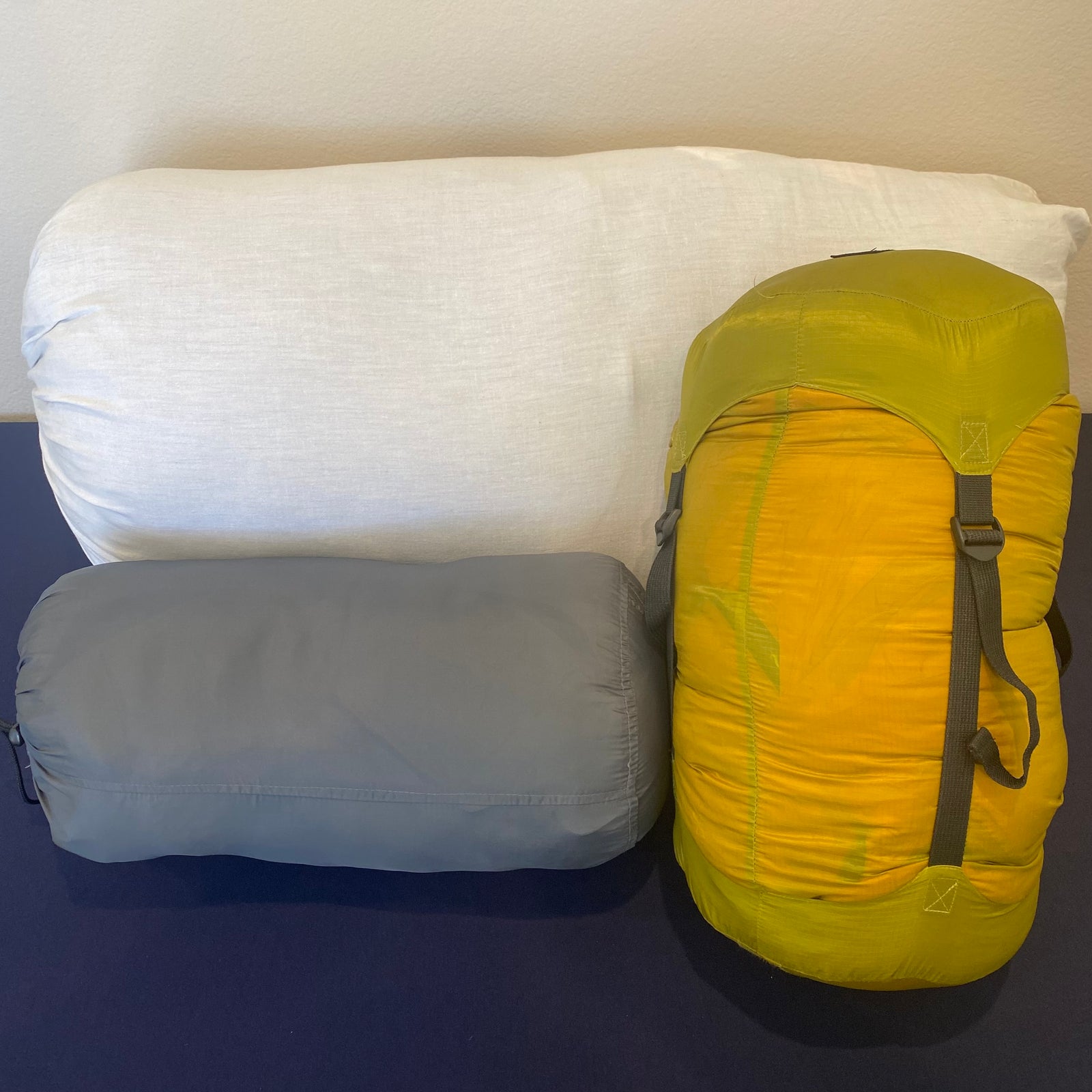Caring for Your Sleeping Bag

You got your sleep system all figured out and now you're ready to hit the trail. What's the best way to transport it all? And, once you're done, how do you store it?
On the Trail
Most of your items came with a stuff sack in their most compressible state. Your liner or pillow aren't going to get any smaller than what they came packaged in. If you picked up something pre-loved (yay!) it might not have come with a stuff sack. No worries, you can pick up small sacks at any outdoor retailer of your choice. Buy the smallest sack your items can fit into and you should be good to go.
Your sleeping bag, on the other hand, likely came with a stuff sack, but it very likely can go smaller. What to do? Check out compression sacks! Also readily available at your local outfitter, the compression sack has 4 straps around the outside of the bag that you use to cinch down the contents of the bag to the smallest you can get. Aim for a compression sack roughly the same size as the stuff sack that came with your bag. If your bag didn't come with a stuff sack, you can usually look up the volume of the bag on the manufacture's website and then get a compression sack in that size.
At Home
Once you're done using your gear, the absolute best way to ensure you have it for your next trip is proper storage. For anything easily washable (sleeping bag liner, pants, etc) the first step is the washing machine. For things not easily washable, you want to spot clean and air them out. Sleeping bags are relatively easy to air out: hang your bag slightly open over the edge of an internal door of your home for a couple of days. Now is a great time to look over the bag for anything that you might want to clean off with a damp cloth.
Once your bag is fully dry and has aired out for at least 24 hours, you can put it in a storage bag. We prefer closed cotton bags (especially if storing in a place where your bag might encounter small animals like spiders), but a mesh sack is another good option. You'll want a sack where you bag is not very compressed.
If you want to DIY one for relatively little money, a king size pillow case with a thin rope in the cuff of the pillow case is our favorite sustainable option. You can also make one by looking up pillow case patterns online and adjusting the length to meet your needs. If you're new to sewing, a pillow case is a great first project to learn on.
Putting it All Together
To make packing for my next trip as easy as possible, I like to store my entire sleep system in the sleeping bag storage sack. Air mattress, pillow, sleeping bag liner, and compression sack all to into the bottom of the sack, followed by the sleeping bag.
I keep a piece of cedar wood on each shelf in the closet where I store my gear to act as a natural pest deterrent as well as to absorb a little moisture from the air to keep things as dry as possible.
Final Thoughts
Proper cleaning, care, and storage of your gear will extend its lifetime reducing waste and saving you money. Wins all around!








